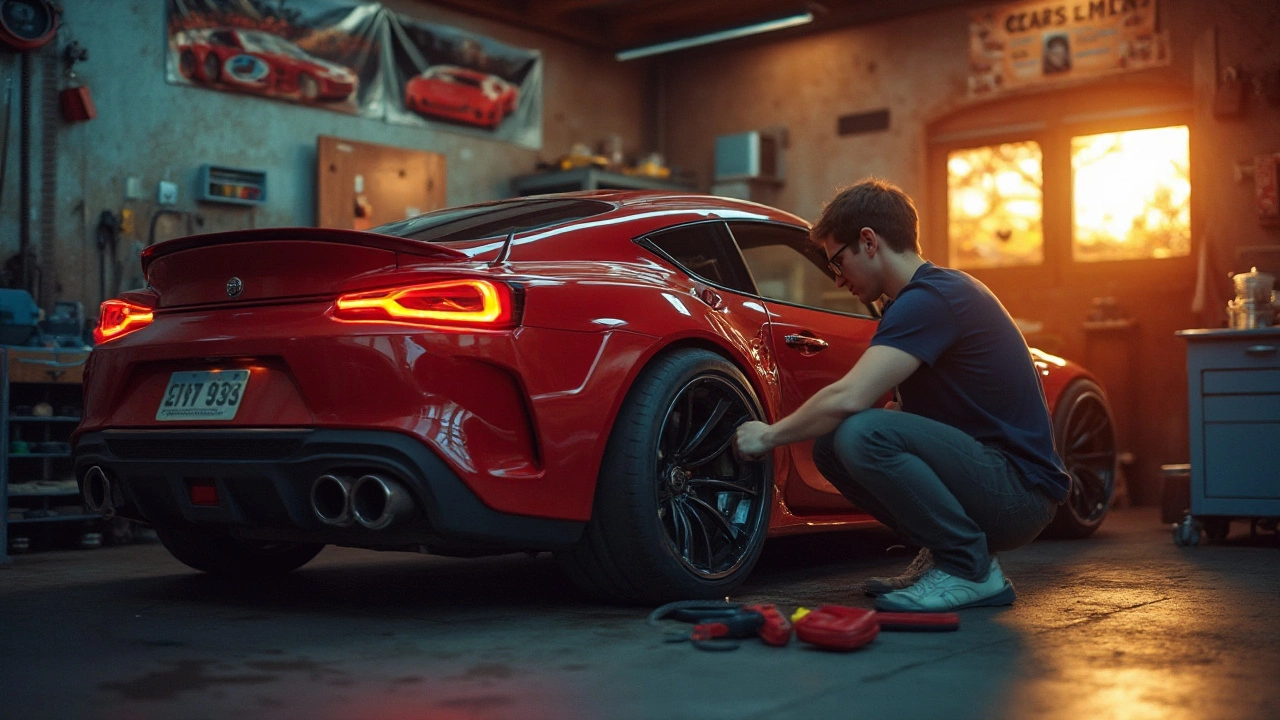Custom Exhaust Laws: Stay Legal While Boosting Your Sound
If you love a deep growl or a sharp crackle, you’ve probably wondered how far you can push your exhaust before the police pull you over. The short answer: you can have a custom exhaust, but you have to stay inside the legal noise limits and meet a few paperwork rules. Ignoring them can mean a fine, a MOT fail, or even a court date.
First off, the law looks at two things: the actual sound level and whether the modification changes the vehicle’s emissions or safety. In the UK, the Noise at Source regulation caps the sound a car can produce at 99 dB(A) when measured at a specific distance. Anything louder than that, and you’re breaking the law. The measurement has to be done with a certified sound meter, not your smartphone, and the result must be recorded in the vehicle’s V5C or a MOT certificate.
Noise Limits & Legal Definitions
Most car owners think the dB rating is a mystery, but it’s pretty straightforward. The test car is placed on a flat surface, a microphone sits 0.7 meters away, and the engine runs at idle and at higher revs. If the reading goes over the 99 dB limit, the exhaust is illegal until you swap it for a quieter one or add a muffler that brings the level down.
Police can also ticket you under the Public Order Act if the noise is deemed a “nuisance”. That’s why you hear officers shouting, “Turn down your exhaust!” during a roadside stop. The penalty can be a fixed charge of £100‑£600, and you might be required to re‑register the car with a compliant exhaust.
Common Modifications and Their Legal Status
Let’s break down the most popular mods.
Resonator Delete: Removing the resonator makes the exhaust louder and gives a rawer tone. It’s legal only if the final dB reading stays under 99. Many owners add a high‑flow muffler to keep the sound in check. Without that, you risk a ticket – just like the article “What Does a Resonator Delete Do? Sound, Performance & Risks Explained” warns.
Pops & Bangs: Crackling backfires are fun, but they can also push the sound level up quickly. If you install a straight‑through pipe, you’ll probably exceed the limit. Using a controlled ignition system that limits crackle volume helps stay legal.
After‑Market Exhausts: Brands like Akrapovič or MBRP offer “street‑legal” versions that already meet the 99 dB rule. Always ask for the certification paperwork before buying.
Exhaust Modifications and Insurance: Any change you make should be reported to your insurer. Failure to do so can void your policy if you get caught. Some insurers even offer discounts for low‑noise, certified exhausts.
So, how can you enjoy a louder ride without the hassle? Start by checking the dB rating of any exhaust you’re eyeing. Ask the installer for a noise test report. If the reading is borderline, consider adding a detachable muffler that you can use for shows and remove for daily driving.
Lastly, keep an eye on local council bylaws. Some towns enforce stricter limits, especially in residential zones. A quick call to your council office can save you a surprise fine.
Bottom line: custom exhausts are allowed, but they must stay under the legal noise ceiling, have proper documentation, and be reported to insurance. Follow these steps, and you’ll get the roar you want without the court summons.
Car enthusiasts often find the idea of installing an aftermarket exhaust exhilarating, providing a touch of personalization to their vehicles. However, the legalities surrounding this modification vary widely from region to region. In this article, we delve into the labyrinth of laws governing aftermarket exhaust installation, helping you understand what is permitted and what might land you in trouble with the law. Compare different international regulations to ensure your revamp is both satisfying and legal.

